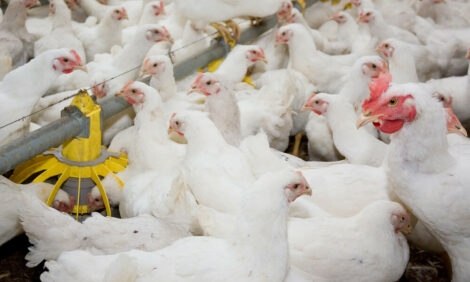



Feathers Help to Fuel the Future
US - Researchers have found chicken feathers as a solution to one of the problems associated with using to hydrogen as a fuel for cars and other vehicles.This is an example of how solving an energy problem could ease a challenging environmental problem as well.
Science Now reports that researchers have discovered that carbonized chicken feathers could provide an inexpensive, environmentally friendly way to store hydrogen fuel for future motor vehicles. If the concept is proven – and perhaps a bigger if, accepted by the automobile industry – it could go a long way toward helping to dispose of the 2.7 million tonnes of chicken feathers generated each year by commercial poultry operations.
Hydrogen is a leading alternative fuel for vehicles. The by-products of its combustion are non-polluting, and its source – water – is super-abundant. One hitch is the amount of energy required to manufacture it, and another is storing enough of it on-board to give vehicles a cruising range that approaches that of gasoline or diesel fuel. Hydrogen has proven notoriously difficult to store in sufficient quantities without placing it under enormous pressure, something that greatly adds to the weight of a vehicle and adds a serious explosion hazard. The best idea so far has been carbon nanotubes – microscopic structures that can pack away large quantities of hydrogen at normal pressure within a relatively small space. But a storage tank made of the nanotubes would cost millions of dollars.
Now a team at the University of Delaware, Newark, tells ScienceNow it has an unlikely candidate: chicken feathers. It turns out that the feathers, which are made of keratin – the same protein in fingernails and beaks – comprise strong, hollow tubes. The team, led by chemical engineer Richard Wool, had been investigating the feathers' potential for improving the performance of electronic microcircuits. The air inside the tubes helps to speed electrons along the printed wiring but the feathers were not stiff enough to hold the circuit boards together very well. So the team tried a heating technique to strengthen the bonds between the carbon atoms in the keratin.
As the team reported today at the 13th Annual Green Chemistry and Engineering Conference in College Park, Maryland, carbonising the feathers gave them a strength approaching that of the nanotubes. They could also store up to 1.7 per cent of their weight as hydrogen, about as much as carbon nanotubes could store. Moreover, the feathers cost virtually nothing to produce. "They're a nuisance commodity," says Dr Wool.
The researchers estimate that a hydrogen-storage tank using the carbonised feathers would cost only about $200 when mass-produced. It's a major step forward, but the US Department of Energy has set a target capacity for hydrogen-storage techniques of six per cent of weight, so the carbonised feathers need improvement.
Still, Dr Wool is confident that the goal can be achieved. "There are all kinds of next steps," he says.
Even if hydrogen does not become the next primary transportation fuel, finding a safer and economical way to store the gas would still be of great value, says chemical engineer John Dorgan of the Colorado School of Mines in Golden. Hydrogen has several important non-transportation uses, he explained to ScienceNow, such as a cooling medium in electricity generation. So the innovative storage technique developed by Dr Wool and his team could be much less hazardous than pressurized tanks. In addition, he says, "It simply makes sense to use renewable materials to build the renewable energy infrastructure."









